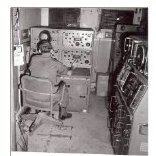5 mistakes high handicappers always make, according to low handicappers
-
Recently Browsing 0 members
- No registered users viewing this page.
-
Topics
-
-
Popular Contributors
-
-
Latest posts...
-
9
Crime Tensions Explode: Thai Boxer Hits Cambodian Worker After Deadly Military Clash
Former Thai boxer down to his last brain cell. -
157
UK Fears grow over migrant protests: Warnings of unrest as tensions rise in UK communities
Likely they came by boat from France, where the frogs did nothing about it except point em in the direction of the UK. So back to France they go. -
12
Tourism Thailand Ranks Among Top 3 Fun Destinations Globally
Don't forget that most Boomers; We’re still in the redefinition phase, still not sure whether we're going to bed after dinner or after a few drinks. -
20
TM30 Required Still ?
I suggest you download the official regulation (in my previous reply) and bring it with you next time........brave....555 -
225
Border Thai and Cambodian Troops Clash Near Ta Muen Thom Temple
Thank you for your compassion. -
98
Report Thailand Recognises Poker and American Football as Official Sports
As for poker being a sport? I would say poker is best described as a psychological sport, not about physical strength, but about mental endurance, emotional control, and the ability to out think your opponents under pressure. I know some people are already rolling their eyes like, “How is poker a sport? You just sit there and play cards.” But let’s be real, if the only requirement for something to be a sport is physical movement, then we’d have to kick out stuff like chess, shooting, and even eSports. And yet all of those are widely recognized as legitimate competitive sports. Poker is a mental game, but it demands serious discipline, preparation, and endurance. Players study for hours, review hands, train their mindset, and sit for 10–16 hour sessions while staying focused and sharp the entire time. Try doing that deep in a tournament on Day 4 with real money on the line and see how “easy” it feels. It’s strategy, stamina, and skill all rolled into one, and just like other sports, the edge goes to those who put in the work. So yeah, poker absolutely deserves its spot among other recognized competitive activities. You don’t have to sweat buckets to be an athlete in every sense of the word.- 1
-

-
-
Popular in The Pub






.thumb.jpg.266ed5385fcbdc6e177d274720390543.jpg)



Recommended Posts
Create an account or sign in to comment
You need to be a member in order to leave a comment
Create an account
Sign up for a new account in our community. It's easy!
Register a new accountSign in
Already have an account? Sign in here.
Sign In Now